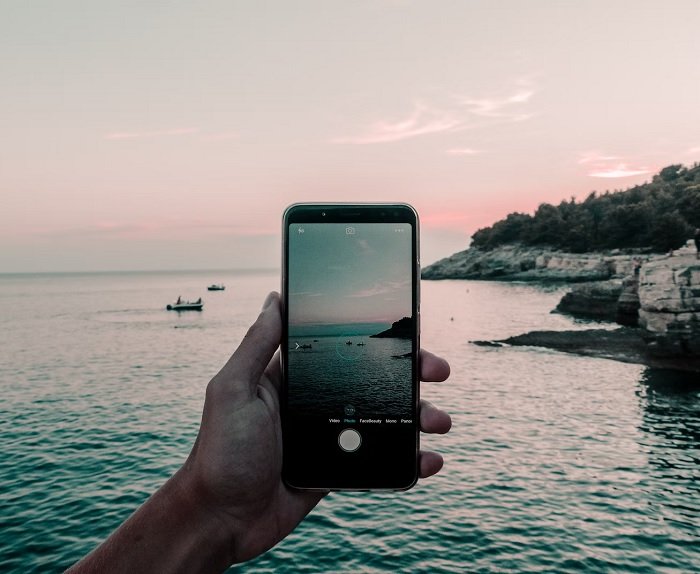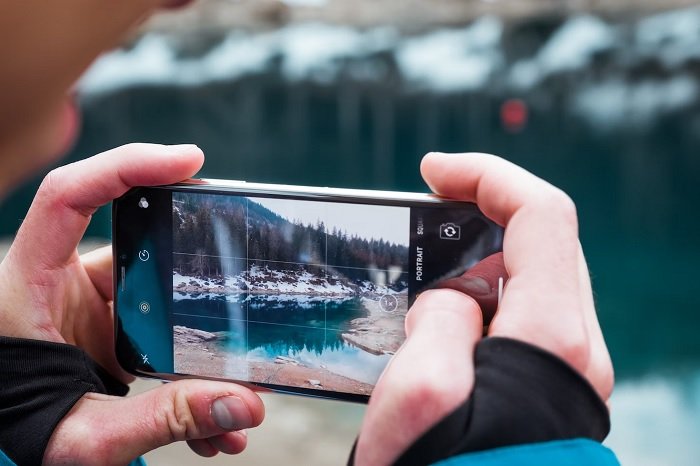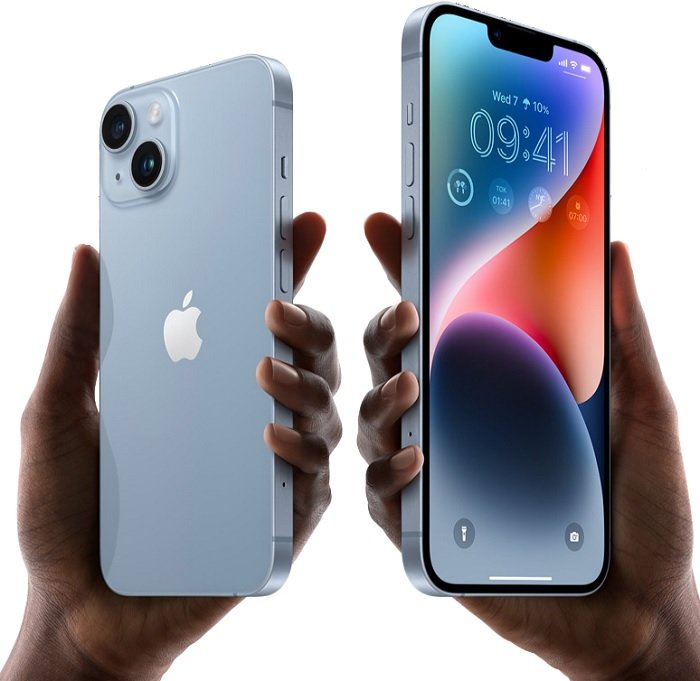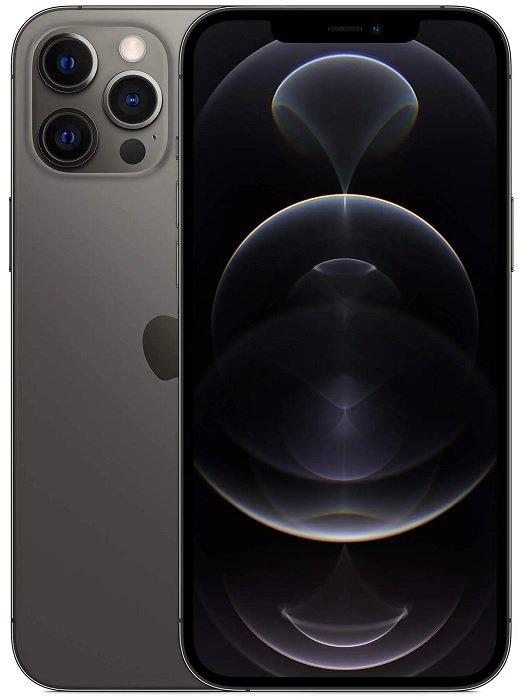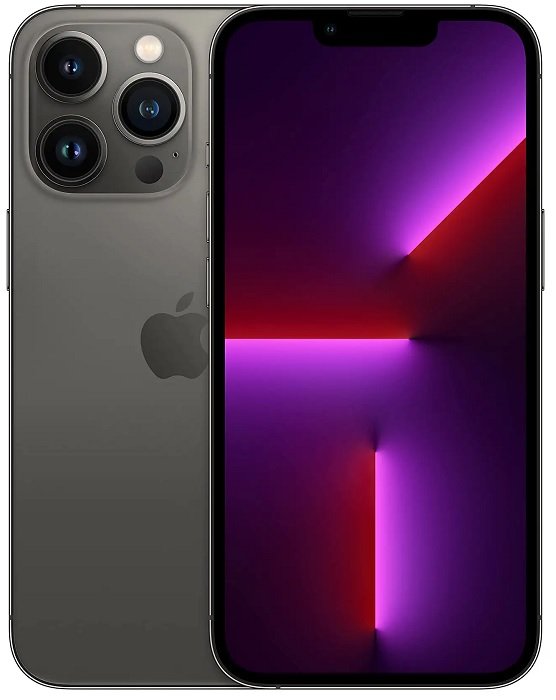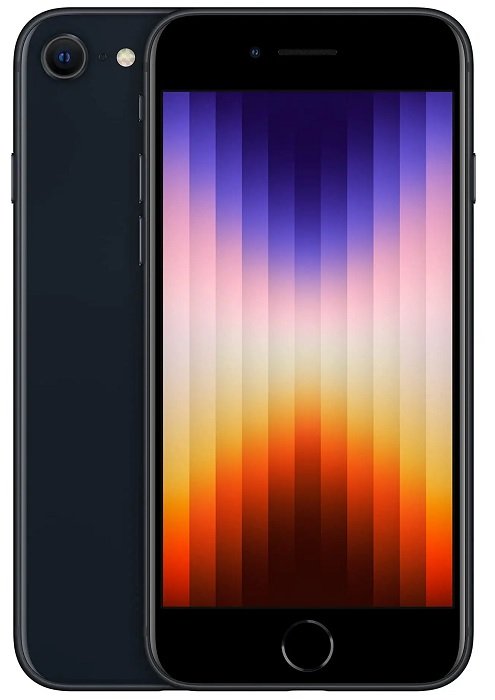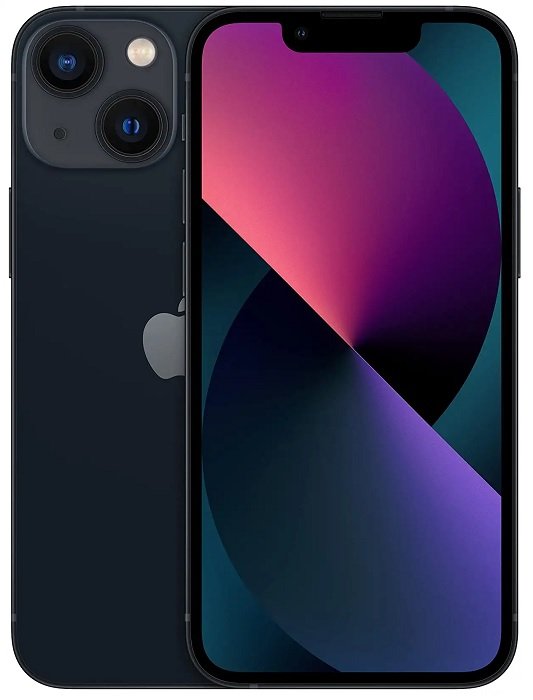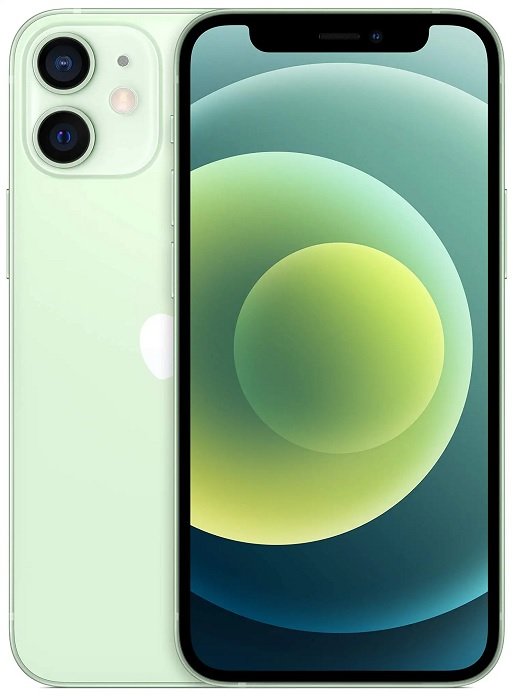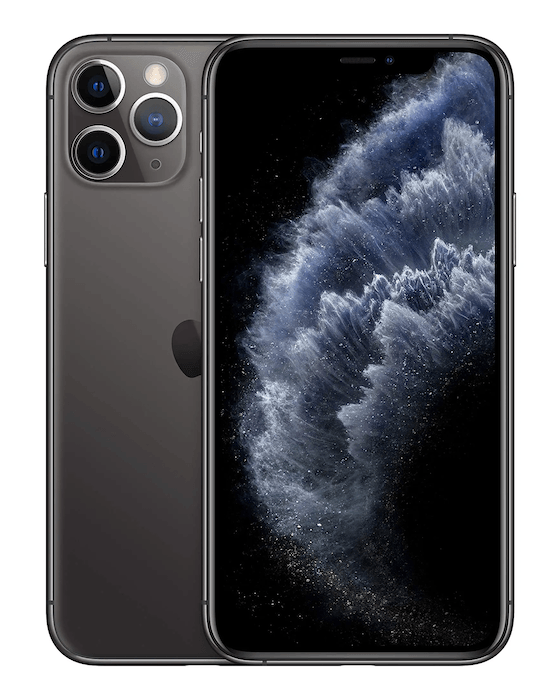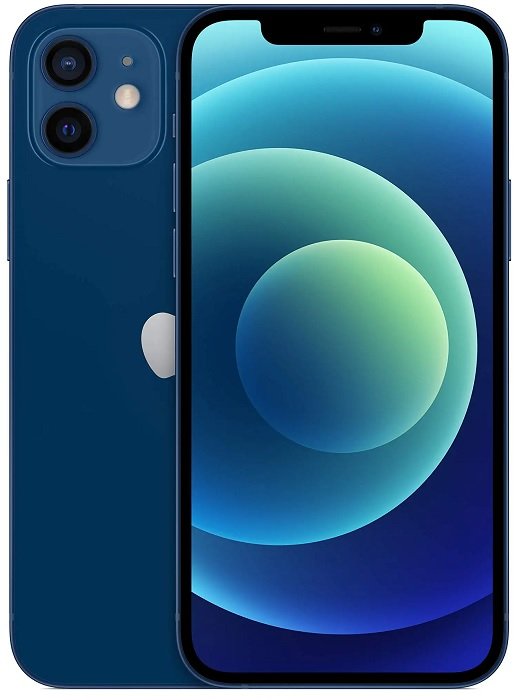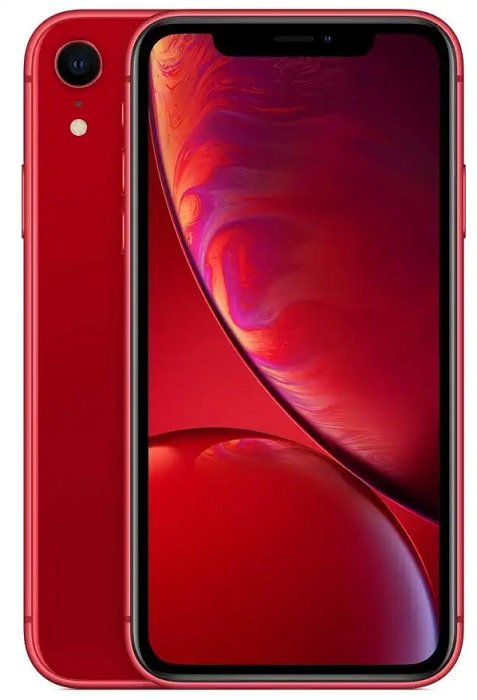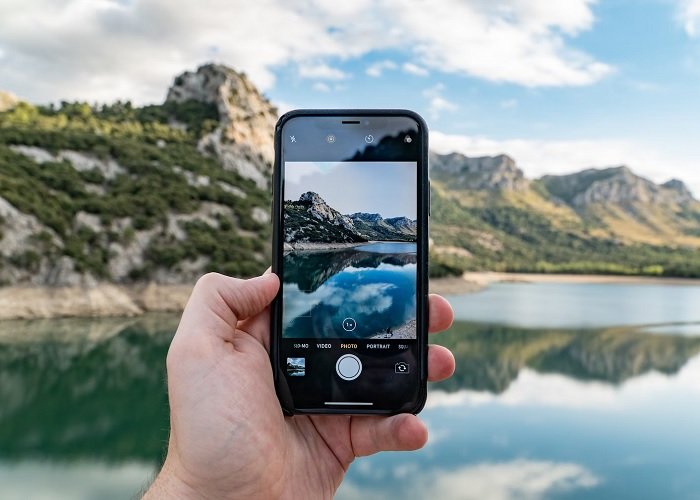Smartphone photography has come a long way in the last few years. Selfies are still popular with iPhone users. But iPhone photography has evolved. Now we’re seeing incredible landscapes, portraits, and fine art photos. There are wonderful photos in every genre, all shot on an iPhone camera. Once you find the best iPhone camera, nothing is holding you back!
What to Look For in the Best iPhone Camera
Before we find out which iPhone has the best camera, we help you with the technical stuff. You must look at a few camera specs when hunting for the best iPhone camera. And this information helps you make the right decision.
Sensor Resolution
Sensor resolution is one of the best indicators of image quality. We measure resolution in megapixels (MP). The number of megapixels refers to the number of pixels on the camera’s sensor. The general rule is the higher the MP count, the better the image quality. Looking at the MP shows you which iPhone camera has a higher resolution. You should be looking for an iPhone camera with a 12 MP resolution. That gives you wonderful image quality. Older models might have a lower pixel count. While that does mean a downgrade in quality, they can be cheaper. You also need to check the MP for the front and rear cameras. The front camera sometimes has a lower resolution.
Camera Aperture
Aperture is one of the three main components of photography. The aperture is the hole that lets light through and onto the sensor. Cameras allow you to change the size of the hole, letting in more or less light. It helps you get the correct exposure for your photo. Photographers like a large maximum aperture. A larger maximum aperture means you get more light onto the sensor. It gives you brighter photos in low light conditions. We notify the size of the aperture with f-stops. You might see f/1.9 or f/2.8, for example. Confusingly, the lower the f/stop number, the larger the aperture. Changing aperture is automatic in the native iPhone camera app. But the maximum aperture gives you a good indication of the camera’s low-light performance.
Optical and Digital Zoom
Most iPhone cameras have zoom capabilities. You won’t see anything much beyond a 2x to 4x zoom range. But that can help you get the shot you want. You also need to know the difference between digital and optical zoom. Optical zoom is where the lens elements move to change the lens’s focal length. That’s a mechanical process. You might experience chromatic aberration with this type of zoom. But the overall quality of your image stays the same. Digital zoom is where the camera zooms in digitally. Rather than increase the focal length, the camera enlarges part of the image. This means the quality of your image decreases the more you zoom in.
Image Stabilization
Image stabilization reduces the effect of camera shake. That means you get a sharper image with no signs of motion blur. Not all iPhones have stabilization. But it’s a handy feature that adds to the iPhone camera quality. Some cameras have optical stabilization. This type helps counteract movement in the camera lens. Plus, there’s sensor-shift stabilization. This reduces the movement of the sensor. Some cameras have one or the other. But the best iPhone cameras have dual image stabilization.
The Best iPhone Cameras for Photography
Before we dive in, check out our Urban Smartphone Minimalism e-book. It shows you the creative possibilities of iPhone photography. And smartphone photography goes hand in hand with social media content creation. So if you’re a budding social media star, you need our Social Success Strategies e-book. It has everything you need to succeed on your socials. So which iPhone has the best camera? Here are our top picks for the best iPhone camera for photography. Our iPhone camera ranking starts with our top pick. And we include options for different budgets.
1. Apple iPhone 13 Pro Max
Release Date: October 2021 Rear Cameras: 12 MP Rear Aperture: f/1.8, f/1.5, f/2.8 Front Camera: 12 MP Front Aperture: f/2.2 Storage: 128, 256, and 512 GB, 1 TB
The iPhone 13 Pro Max is the best iPhone camera for photography. There’s no other smartphone camera like it. It has one of the best cameras on any smartphone, whether iOS or Android. And you get an excellent set of camera hardware and features. The iPhone 13 Pro Max is the ultimate photography camera. The iPhone 13 Pro Max has a 12 MP sensor resolution. And that’s for the cameras at the front and rear of the phone. The front camera has a wide-angle lens with an aperture of f/2.2. It’s nothing revolutionary. But you can snap some stunning selfies! Other photographers will be more interested in the rear camera. It’s a triple-camera unit with three separate lenses. There’s an ultra-wide lens with an f/1.8 aperture. There’s an f/1.5 wide-angle lens. And there’s a telephoto lens with an f/2.8 aperture to complete the trio. The three lenses give you incredible shooting options. It’s a versatile smartphone for photographers. The native camera app is packed with photography features. There’s a portrait mode for front and rear cameras. There’s depth control for accurate shooting. And there’s a night mode for after-dark photography. The Smart HDR is great for stills. But you also get HDR video recording. The 13 Pro Max is a fantastic video camera too. You can shoot 4K Dolby Vision videos at a frame rate of 60 fps (frames per second). And you also have Cinematic mode for pro-looking videos. It adds a shallow depth of field to the footage. And it can shift focus from one subject to another automatically. We recommend the version with 512 GB of memory. But you can get the 1 TB model if you need more storage. The battery life is excellent. And one of the reasons this beats the iPhone 13 Pro? It has an incredible dual-camera system. And I nearly forgot to mention the optical image stabilization. It’s the full iPhone photography package!
2. Apple iPhone 14 Pro Max
Release Date: October 2022 Rear Cameras: 12 MP Rear Aperture: f/1.5, f/2.4 Front Camera: 12 MP Front Aperture: f/1.9 Storage: 128, 256, and 512 GB, 1 TB
The iPhone 14 is Apple’s latest edition in their iconic line of camera phones. It’s so new that we haven’t been able to give it a test drive… yet! We can see from the specs and previews that iPhone photographers won’t be disappointed. But they won’t be too excited either. There aren’t any huge strides forward in the camera department. The Apple iPhone 14 Pro Max has three cameras in total. You have the front camera. And there are twin cameras on the rear. The front camera has a 12 MP resolution, as we’ve seen on previous models. But it now has a bright f/1.9 aperture. That’s an improvement from previous models! The rear cameras also have a 12 MP resolution. You’ll get fantastic images. But we’re disappointed to see no improvement here. There’s a wide-angle and an ultra-wide angle lens. The apertures are the same as the 13 Pro Max. But the iPhone 14 has no telephoto lens. You get a 2x optical zoom and a 5x digital zoom. But that doesn’t make up for taking away the telephoto camera. It appears most of the improvements have come in the video department. You can shoot 4K video at up to 60 fps. And you have cinematic mode at 30 fps. There’s slow-motion recording at 120 or 240 fps. And you get a time-lapse video feature. Video mode also has a 2x optical zoom and image stabilization. The iPhone 14 is a multimedia camera. It’s basically the same camera tech as the 13 Pro Max, which isn’t bad. But most of the improvements are video features. The Apple iPhone 14 might be the best hybrid iPhone camera. But photography purists don’t need to upgrade just yet.
3. Apple iPhone 12 Pro Max
Release Date: October 2020 Rear Cameras: 12 MP Rear Aperture: f/2.4, f/1.6, f/12 Front Camera: 12 MP Front Aperture: f/2.2 Storage: 125, 256, and 512 GB
The iPhone 12 Pro Max is the older version of the 13 Pro Max. We’re a few years on from the release date in 2020. But the iPhone 12 Pro Max remains one of the best iPhone cameras for photography. Apple is well aware that cameras have become a big selling point in smartphones. And the iPhone Pro Max answered that demand. The front and rear cameras both have a 12 MP sensor. You can expect impressive image quality. The front camera has a wide-angle lens with a large f/2.2 aperture for low light. It gives you light and airy self-portraits. And it’s great for casual blogs. The serious camera specs are found on the rear camera. It’s a triple camera unit, much like the one on the 13 Pro Max. Each iPhone camera lens has a different focal length, giving you more photography options:
An ultra-wide-angle lens with a 13mm focal length. The aperture is f/2.4 A standard wide-angle lens has a 16mm focal length with an f/1.6 aperture A telephoto lens has a 52mm focal length with an f/2 aperture
The apertures aren’t as wide as those on the 13 Max Pro. But they still give you plenty of light for high-quality photography. That’s why it’s still one of the best camera phones. The camera has an optical zoom with a 5x range. And an optical zoom means no pixelation when you zoom in. You also have optical image stabilization to reduce camera shake. You get a handful of excellent photo modes for different lighting. It includes Night mode, Smart HDR, and Deep Fusion. They improve image details and textures in medium to low light. Plus, there’s 4K Dolby Vision HDR video recording. The latest iPhone camera has topped the 12 Pro Max. But not by much. It remains one of the best camera phones on the market. And its age makes it a more budget-friendly option for smartphone photographers. It’s not the best iPhone camera. But it’s close.
4. Apple iPhone 13 Pro
Release Date: September 2021 Rear Cameras: 12 MP Rear Aperture: f/1.8, f/1.5, f/2.8 Front Camera: 12 MP Front Aperture: f/2.2 Storage: 125, 256, and 512 GB, 1 TB
There isn’t much difference between the Apple iPhone 13 Pro Max and the 13 Pro. The camera specs are very similar. And they are both excellent cameras for smartphone photographers. The 13 Pro has the same triple camera array on the rear. And they have excellent modes for any type of photography. The reasons the 13 Pro scores lower than the Pro Max are screen size and battery life. The Pro has a smaller screen than the Pro Max. It’s 6.1 inches compared to 6.7 inches. We feel iPhone photographers appreciate the larger screen. It’s easier to compose your shots. And it helps with editing apps like Lightroom Mobile. The shorter battery life of the 13 Pro means you’ll have less time to take pictures. It’s only a difference of a couple of hours. But you don’t want to stop and recharge when you’re in the zone. That’s not to say the Pro has poor battery life. You still get 22 hours of shooting time. That’s better than most digital cameras and camera phones! The triple camera array has the same lenses and apertures. But the telephoto lens has a 2x optical zoom. That’s a good feature for photographers. But it’s a step down from the 3x zoom on the 13 Pro Max. The iPhone 13 Pro has the same excellent camera modes. You get Night mode for low-light photography. There’s Smart HDR and Apple ProRAW for more advanced shooting. And video makers will love the 4K Dolby Vision HDR video recording. While coming just short of the 13 Pro Max, the iPhone 13 Pro is still a dream for smartphone photographers. You can also save a small amount if you choose the Pro. But whether you buy the Apple iPhone 13 Pro Max or the 13 Pro, you get a great camera phone!
5. Apple iPhone SE
Release Date: March 2022 Rear Cameras: 12 MP Rear Aperture: f/1.8 Front Camera: 7 MP Front Aperture: f/2.2 Storage: 64, 128, and 256 GB
The iPhone SE is the most recent iPhone release from Apple. It’s not their most advanced in terms of camera specs. But the iPhone SE is one of the best-value camera phones on the market. Always buying the best iPhone camera is expensive. The SE gives smartphone photographers great results at a reasonable price. The iPhone SE still has a dual camera system, with a front and rear camera. But there is a difference in camera quality. The front camera has a 7 MP resolution and an f/2.2 aperture. The aperture is wide enough. But the 7 MP sensor is a step down from the rear camera. It’s fine for casual photos and selfies. But serious shooters will stick to the rear camera. The rear has better camera technology. The sensor has a 12 MP resolution. You see a noticeable improvement in the front camera. And it also has a lovely wide-angle lens with a large f/1.8 aperture. You can snap stunning landscape shots. And the optical image stabilization (OIS) means you don’t need a tripod. But only the rear camera has the OIS system. The iPhone SE only has one lens option on the rear. It’s a wide angle, which is versatile for smartphone photography. But we’re disappointed there’s no telephoto lens. The digital zoom is helpful. But it does affect the image quality at longer ranges. The front camera is limited. But it still has Smart HDR and portrait mode. And you can record Full HD videos. Again, the back camera tops it. It has the same modes as the front but has 4K video recording at 60 fps. That’s excellent-quality video capture! The iPhone SE has plenty of memory for photography apps. And it has a longer battery life than one might expect. You get 15 hours of video playback. The iPhone SE is a budget iPhone camera. But it still has an excellent camera setup. It’s ideal for a penny-pinching iPhone photographer.
6. Apple iPhone 13 Mini
Release Date: October 2021 Rear Cameras: 12 MP Rear Aperture: f/2.4, f/1.6 Front Camera: 12 MP Front Aperture: f/2.2 Storage: 125, 256, and 512 GB
Photographers are always keen to tell you, “size isn’t everything.” And that’s certainly true of the Apple iPhone 13 Mini. It’s a smaller and more compact version of the 13 Pro. Plus, there’s very little compromise in photography performance. It’s ideal for iPhone photographers with small pockets. And you’ll save some money too! The front and rear cameras have a 12 MP sensor. You can expect excellent image quality from both sides. The front is a True Depth camera that captures 3D portraits for face ID authentication and Animojis. It has a Night mode and 4K video too. Dual lenses are on the backside. There’s a wide-angle camera (26mm) with an f/1.6 aperture. The other is an ultra-wide lens (13mm) with an f/2.4 aperture. The 13 Mini does lack the telephoto lenses of the bigger models. But the two rear cameras give you plenty of photography options. We’re not finished talking about the camera tech on the back. You get a ton of photographic styles to choose from. There’s Night mode and Smart HDR. And you get 4K HDR video recording. It’s a multimedia iPhone camera. You get enough internal storage with 256 GB for camera apps and a hefty photo library. And you can opt for the 512 GB model if you have a few extra bucks. The battery life is impressive for a small phone. It gives you 15 hours of shooting time. It also has weather sealing for outdoor photography. The iPhone 13 Mini is one of the most impressive cameras for its size!
7. Apple iPhone 12 Mini
Release Date: April 2021 Rear Cameras: 12 MP Rear Aperture: f/1.6, f/2.4 Front Camera: 12 MP Front Aperture: f/2.2 Storage: 64, 128, and 256 GB
The Apple iPhone 12 Mini offers another compact iPhone camera option. It’s a convenient size. And we’re seeing much of the same camera technology as the 13 Mini. The tech isn’t quite as good as the newer model. But it’s still a great camera for iPhone photographers. The front camera gives you excellent image quality with the 12 MP resolution. That’s the same as the rear cameras. It’s a True Depth camera with night mode and 4K video options. The 12 Mini has a twin camera array on the back. You get a 26mm wide-angle lens with an f/1.6 aperture. The other is an ultra-wide 13mm lens. You don’t get the same level of brightness from the f/2.4 aperture. But it’s still ideal for landscapes and real-estate interiors. There’s no telephoto lens. But you do have optical image stabilization for the two rear cameras. You get a good selection of modes for both cameras. These include specialist modes for portraits and night photography. Plus, there’s Deep Fusion and an older version of Smart HDR. The 4K cinematic mode is also impressive so that you can make all kinds of media content. It’s a step down from the iPhone 13 Mini. But it’s only a small step. At a glance, you might think they’re the same camera. The reduced memory and battery life are two downsides. But it’s a fantastic camera phone with features photographers will appreciate. The iPhone 12 Mini is the perfect iPhone camera if you want something small and affordable.
8. Apple iPhone 11 Pro
Release Date: September 2019 Rear Cameras: 12 MP Rear Aperture: f/1.8, f/2.4, f/2 Front Camera: 12 MP Front Aperture: f/2.2 Storage: 64, 256, and 512 GB
The Apple iPhone 11 was released a fair few moons ago now. It’s not their latest model. It almost has retro status. But it remains one of the best iPhone cameras for photography. The iPhone 11 Pro has a four-camera set. The camera on the front has a healthy 12 MP resolution with a typical f/2.2 aperture. It gives you a wide-angle view. And it has Apple True Depth technology. It’s ideal for selfies and vlogs. The rear camera is a triple threat. You get a wide-angle, ultra-wide-angle, and a telephoto lens. The apertures aren’t as wide as on later models. But they still give you enough light for vibrant photos. The telephoto camera feature comes and goes with iPhone. As a photographer, I prefer the models that have it. And the iPhone 11 Pro is one such model. The back cameras have optical stabilization and a 2x optical zoom. You also have the classic portrait mode. Plus, there’s a Night mode for darker situations. The iPhone 11 is old, but it isn’t over the hill. It can still run the best photography and editing apps. It’s a versatile and cost-effective iPhone camera for photographers!
9. Apple iPhone 12
Release Date: October 2020 Rear Cameras: 12 MP Rear Aperture: f/1.6, f/2.4 Front Camera: 12 MP Front Aperture: f/2.2 Storage: 64, 128, and 256 GB
The Apple iPhone 12 is a popular camera upon release. It’s a great all-round camera phone. It’s not as old s the iPhone 11. But we’ve ranked it lower because it doesn’t have a telephoto lens. There aren’t many surprises with the iPhone 12. You have 12 MP sensors for the front and rear cameras. There’s nothing ground-breaking, but you can snap some wonderful photos. The front camera has True Depth technology for better portraits. And the f/2.2 aperture allows enough light enough for most situations. The iPhone 12 does have double camera lenses on the rear. There are 13mm and 26mm lenses, giving you two different wide-angle shots. The f/2.4 aperture for the ultra-wide is a bit narrow. But it’s not a major setback for photographers. The main disappointment is the missing telephoto lens. You get fantastic video content with the iPhone 12. You can shoot 4K videos at 30 fps. And you have an option for Dolby Vision HDR video recording. The stills features include Night mode and Portrait mode. And you get Deep Focus and Smart HDR 3. In terms of hardware, the iPhone 12 still holds up. It’s a powerful smartphone. And it runs apps like Lightroom Mobile without issue. But most of all, it’s a good camera. The iPhone 12 isn’t the go-to camera for iPhone photographers. But it’ll deliver excellent photography results.
10. Apple iPhone SX
Release Date: September 2018 Rear Cameras: 12 MP Rear Aperture: f/1.8, f/2.4 Front Camera: 7 MP Front Aperture: f/2.2 Storage: 64, 256, and 512 GB
The iPhone XS MAX has become a classic iPhone. With a release date in 2018, it’s definitely old. But it still holds up in the photography department. If the other iPhone features don’t attract you? The iPhone XS Max gives you a stripped-back phone camera. And you won’t need a bank loan to buy one. The front camera hasn’t aged well. You only get a 7 MP resolution. That won’t help selfie fans look their most fabulous. But the portrait mode has bokeh and depth control to help you make the most of it. You can also shoot Full HD videos. The back cameras do hold up against modern competitors. The 12 MP resolution gives you gorgeous images. You get excellent shooting modes. And that includes five different portrait lighting effects. It gives you a 10x digital and 2x optical zoom. And you can shoot 4K videos with a selection of frame rates. The iPhone XS Max is still a good camera for iPhone photographers. The battery life isn’t as good as later iPhones. And it doesn’t have the advanced phone features you see now. But if you stick to the rear camera, iPhone photographers will have a lot of fun.
11. Apple iPhone XR
Release Date: September 2018 Rear Cameras: 12 MP Rear Aperture: f/1.8 Front Camera: 7 MP Front Aperture: f/2.2 Storage: 64, 128, and 256 GB
The Apple iPhone XR is another “golden oldie” from 2018. Old in the tooth, yes. But the camera isn’t bad. When we look at the XS Max and the XR, they’re essentially the same cameras. The iPhone XR is limited. But it’s another fuss-free iPhone camera. It’s an affordable iPhone for photographers wanting to take a quick pic. As with the SX, the front camera isn’t great. It only has a 7 MP resolution. The shooting modes help. But you get the best results with the camera on the back. The back camera still gives you a good return. The 12 MP resolution still competes with updated models. And the native camera app has loads of shooting modes to play with. There is only one rear camera. It has a lovely wide angle and a large f/1.8 aperture. But a single camera feels limited compared to other iPhone cameras. The iPhone XR is falling behind the younger runners. But there’s life in the old dog yet. The back camera gives you fantastic images. And it has more than enough power for photography apps. The iPhone XR is a simple and affordable option.
Conclusion
iPhone photography is becoming an art form all its own. It’s growing in popularity and gaining respect from the traditional photography crowd. Now’s the time to get involved. That’s why you need the best iPhone camera for photography. The Apple iPhone 13 Pro Max is the iPhone with the best camera. It has four cameras, including the coveted telephone camera. And it has all the latest modes and photography features. The iPhone 14 Pro Max is hot on its heels. But we think you’re better off with the iPhone 13 Pro Max for the time being. There are plenty of other iPhone cameras to choose from. They all have their strengths. And the older models do have a few weaknesses. But the older models offer simple and affordable options for iPhone photographers. Remember, the newest model isn’t always the best model!
